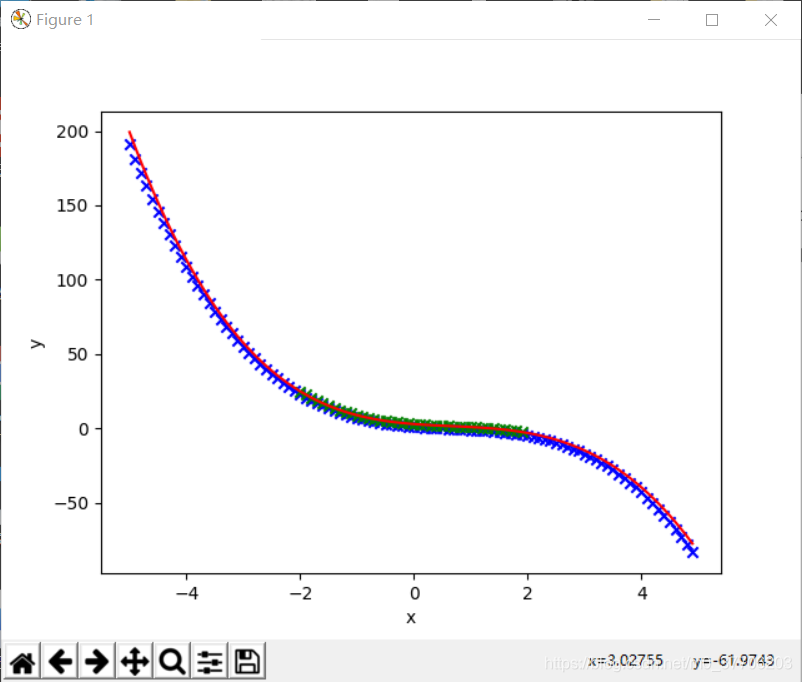Python sklearn 庫中嶺迴歸的簡略使用方法
阿新 • • 發佈:2018-12-10
import numpy as np # 快速操作結構陣列的工具 import matplotlib.pyplot as plt # 視覺化繪製 from sklearn.linear_model import RidgeCV # Ridge嶺迴歸,RidgeCV帶有廣義交叉驗證的嶺迴歸 from sklearn.preprocessing import PolynomialFeatures # 使資料具有多項式特徵 # 生成資料 x = np.arange(-2, 2, 0.1) y = -x**3 + 2*x**2 - 3*x + 1 + np.random.rand()*2 x = x.reshape((40, 1)) # 加入多項式特徵,否則預設為一次 poly_reg = PolynomialFeatures(4) # 最高為4次 x_train = poly_reg.fit_transform(x) # 宣告模型 訓練模型 Rid_model = RidgeCV(alphas=[0.1, 0.5, 1, 10]) Rid_model.fit(x_train, y) # 形成新資料 x_2 = np.arange(-5, 5, 0.1) y_result = -x_2**3 + 2*x_2**2 - 3*x_2 + 1 # 希望得到的預期結果 # 使用模型預測 x_2 = x_2.reshape((100, 1)) x_pre = poly_reg.fit_transform(x_2) y_predict = Rid_model.predict(x_pre) # 預測結果 # 繪製散點圖 plt.scatter(x_2, y_result, marker='x', color='blue') plt.scatter(x, y, marker='x', color='green') plt.plot(x_2, y_predict, c='r') # 繪製x軸和y軸座標 plt.xlabel("x") plt.ylabel("y") # 顯示圖形 plt.show()
執行結果如下:

可以看到,擬合曲線(紅色)和期望影象(藍色的點)大致相同。
